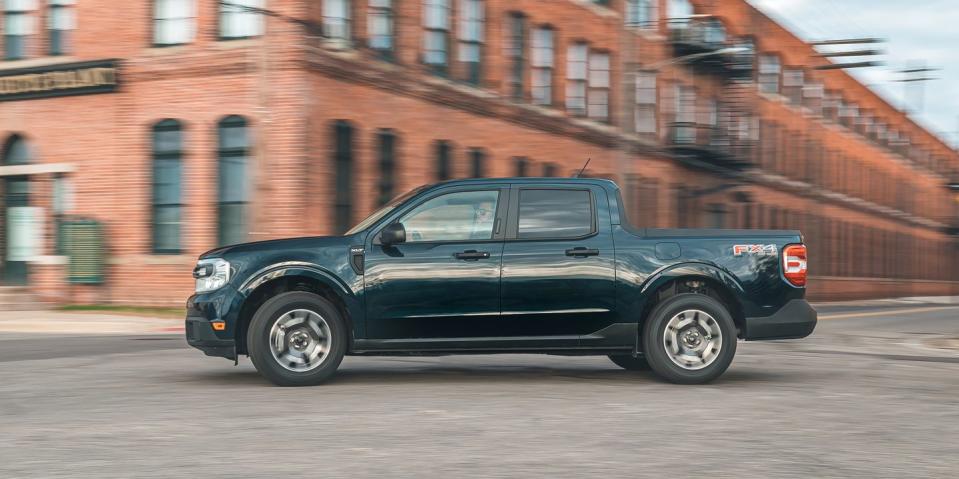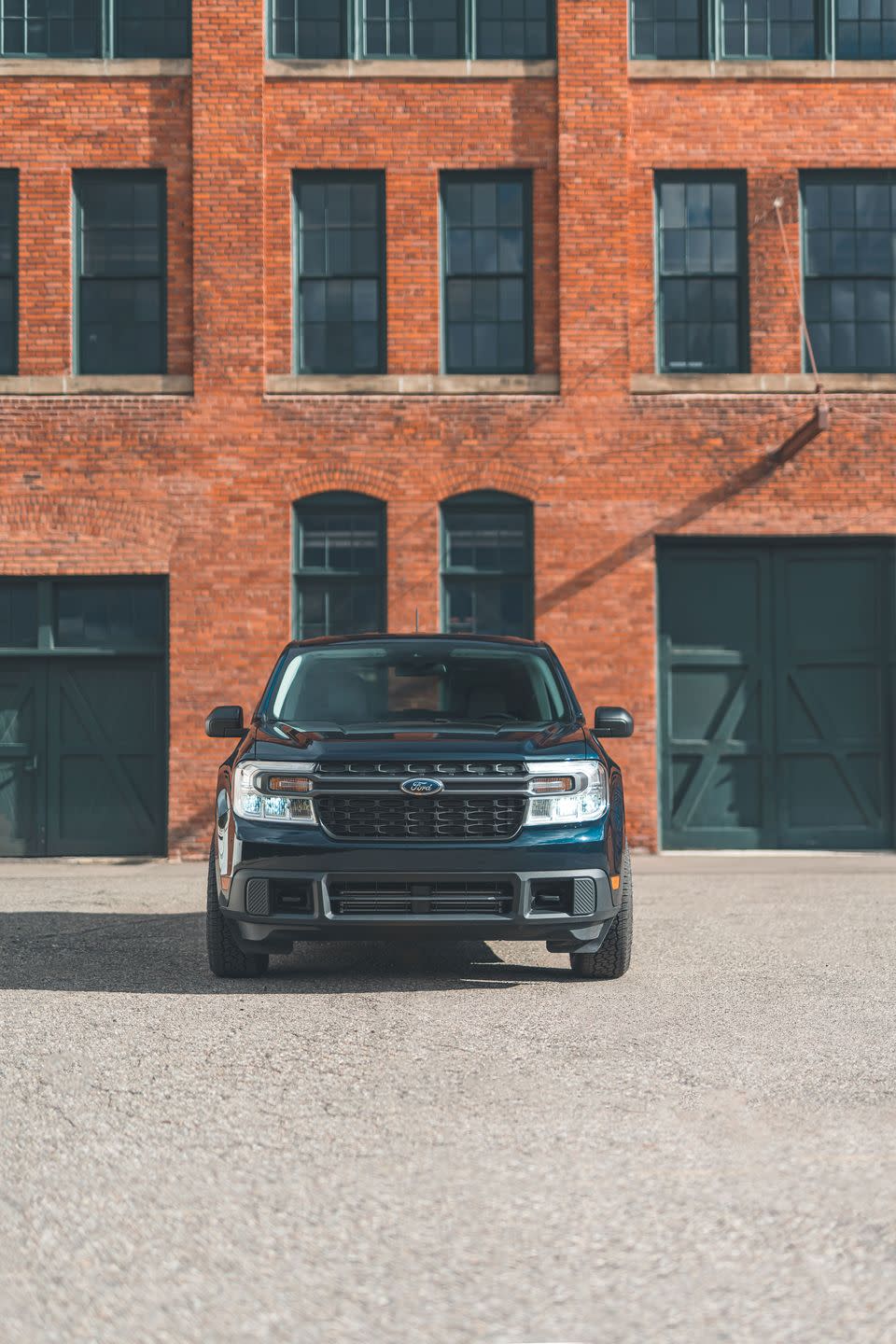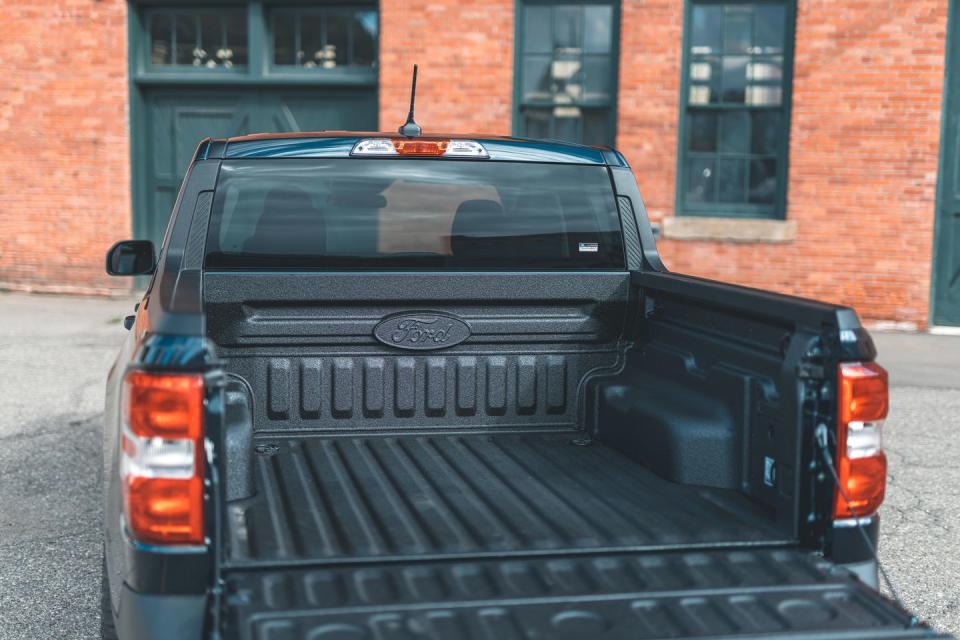Tested: 2022 Ford Maverick Is a Big Little Truck

UPDATE 12/10/21: This review has been updated with test results for an all-wheel-drive FX4 model.
A few years ago, as the world was questioning the announcement that Ford would cease selling cars in the U.S. (except for the Mustang), Ford's executives must have been concealing a smirk. That's because they knew that the about-to-be-announced Maverick small pickup would soon be ready to assume the entry-level slot in the lineup.
The Maverick is roughly the size of the previous-gen Ranger that Ford dropped a decade ago. It has a very affordable starting price. It is available only as a four-door crew-cab model in three trim levels: XL, XLT, and Lariat. And its arrival is meaningful: With the Maverick, and also the new-for-2022 Hyundai Santa Cruz, small trucks are back.
Walking up to the Maverick, the first impression is how low its roofline is. The new truck sits nearly five inches lower than the current Ranger and almost seven inches below the F-150. If you're roughly five feet nine or taller, you'll be able to see right over the top of the cab, an extremely rare occurrence for a pickup today.

The Maverick may be more Escape in pickup-truck form than mini-F-150, but its capabilities are plenty to convince that this is no mere costume. Based on the same C2 unibody platform, the chassis is largely shared with the Escape but has been beefed up to achieve a compelling 1500-pound payload capability, which betters that of the four-door Toyota Tacoma.
The pricing is as big a surprise as the return to the small-truck segment. There's no 1.5-liter three-cylinder as in its Escape and Bronco Sport platform-mates; instead, the $21,490 entry-level Maverick is a front-wheel-drive four-cylinder hybrid. This is Ford's well-sorted tech that dates back to the 2005 Escape hybrid. Combined output of its 2.5-liter inline-four and two electric motors is 191 horsepower, and the price of the Maverick hybrid is a whopping $7785 cheaper than an Escape with the same powertrain. The step-up option is a 250-hp turbo 2.0-liter inline-four that's a $1085 upcharge on any trim level.

Morphing a compact SUV into a pickup brings an unusual amalgam of car and truck traits. For example, massive, antisocial levels of wheelspin with the turbocharged front-drive, even from a rolling start. We'd recommend opting for all-wheel drive ($2220) with the more powerful engine. In addition to the added traction, all-wheel drive brings with it an independent rear suspension, which replaces a torsion beam in the front-drivers. Over the road, the Maverick has the resolute solidity of a unibody SUV with a firm ride that enables the lofty payload and benefits body control. A flourish is playful lift-throttle rotation at the limit, reminiscent of the compact hatchbacks that Ford no longer sells. But the stability control can't be completely disabled, so it's a short-lived thrill. The steering has a truckish imprecision, and efforts are on the high side, while the brake feel from the upsized brakes, relative to the Escape or Bronco Sport, is solid and confidence inspiring. In our 70-to-zero-mph brake test, the Maverick stopped in 172 feet, about in line with the Hyundai Santa Cruz and better than what we've measured in a Honda Ridgeline or the Maverick's big-brother Ranger. The Maverick's 2.0-liter is muted. Wringing it out brings mostly flow noise from the exhaust system. But it's quick; the sprint to 60 mph in an all-wheel-drive FX4 we tested came in at 5.9 seconds. And, in our 75-mph highway fuel-economy test, the Maverick matched its 29-mpg EPA highway figure.


 Yahoo Autos
Yahoo Autos 